Racing on the ridge-top Back Bone Trail in the mountains above Malibu, overlooking the Pacific Coast on an unusually clear blue-sky day, I coached myself with expressions like, “You’re right where you need to be,” “Make the most of this,” or, “You’ll be fine, don’t worry.”
Coaching myself is something I’ve been working on, because in the past, self-criticism led to self-sabotaging mid-race. It paid off last Saturday, February 6, during the Sean O’Brien 50K, my first significant race in this six-month season.
Sorry, I know race reports are more fun to read when they feature epic blow-ups that mix blood and barf with fear and self-loathing. But it’s important, for me as a coach anyway, to document why and when things go well in a race.
I picked this race because I wanted to experience racing on Southern California terrain similar to the trails where I grew up in Ojai, and because I heard good things about race director Keira Henninger’s events. Mostly, I wanted to test my strength and speed at this point in post-Christmas training, following only four solid weeks of training and two taper weeks. (From November through Christmas, I cut out long runs and reduced weekly volume to a minimum.) My plan is to ramp up to what I hope will be a confidence-building April 9 Lake Sonoma 50M, and then switch to very specific terrain and heat training with increased volume from mid April through mid June in preparation for the big goal of June 25’s Western States 100. I don’t want to peak too early and risk injury.
I had to fight Fear Of Missing Out and mild peer pressure to adhere to this deliberate plan, however, since it felt like most of the cool people were doing a 100K last Saturday. The Sean O’Brien event had a highly competitive 100K division that attracted big names and got lots of attention, since the top two male and female finishers earned automatic entry to Western States. I had other friends who on the same day did the Tarawera 100K in New Zealand or the Ordinance 100K near Monterey, and some mentioned online that they were “kicking off their Western States 100 training” with those 62-mile outings. Doing “just” the 50K felt like pedaling behind the big kids with training wheels on my bike.
But I was being smart. My weekly mileage in January started in the low 50s and got past 70 one week, 60 another. I’ve been carefully layering in some speedwork and hill training, and also being dedicated to strength conditioning. In other words, I’m trying really hard to train right! I didn’t need to trash my legs with a 100K that I was undertrained for. Better to push myself at a 50K to practice really racing, and use it as a stepping stone to Lake Sonoma 50M. More is not always better, and every distance deserves respect and is hard in its own way. (I’m probably being overly sensitive or defensive, but it bugged me that someone on Instagram teased Western States 100 course record holder Timmy Olson, who’s coming back after a rocky couple of years, of “cherry picking” by racing and winning the Sean O’Brien 50K, implying he should’ve raced with the tough pack in the 100K. I’d like to think Tim was wisely doing what’s right for him at this point in time.)
Thankfully, several great people were doing the 50K, too! I was happy to connect with some ultrarunning/Facebook friends at the start.
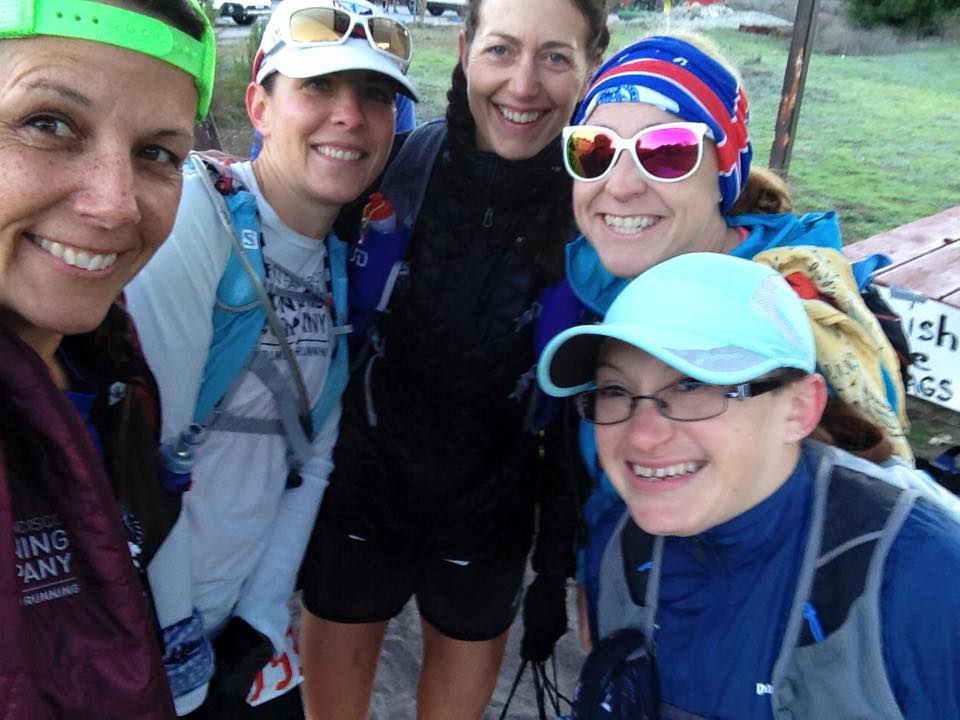
At the Sean O’Brien 50K start (L-R): Lauri Abrahamsen, Kara Teklinski, me, Angela Abbey and Kate Panepinto. (selfie by Laurie)
The out-and-back course started in Malibu Creek State Park, a canyon that traps cold ocean air. The starting line area was unexpectedly really cold, so I shivered and realized I was burning extra calories to stay warm; I was glad I planned to take extra calories just two miles in, at the base of a big climb. The cold temperatures encouraged me to go out hard and fast (relatively speaking—a sub-9-minute pace) to warm up. But just as I was thawing out, we hit a calf-high stream crossing. Both feet got soaked and felt a little numb. Once we started up the hill, I felt A-OK.
The first big hill shoots up 1500 feet in 2.5 miles, dips down a little, and then delivers an in-your-face 400-foot climb over a hump of sandstone formations. The first aid station is on the other side of that hump. During these early miles, I leaned into the hill and efficiently transitioned between powerhiking and running. I had expected my pace to slow way down to hiking speed, maybe as slow as 18 minutes/mile, but I still averaged a sub-15-minute pace on the steepest parts.
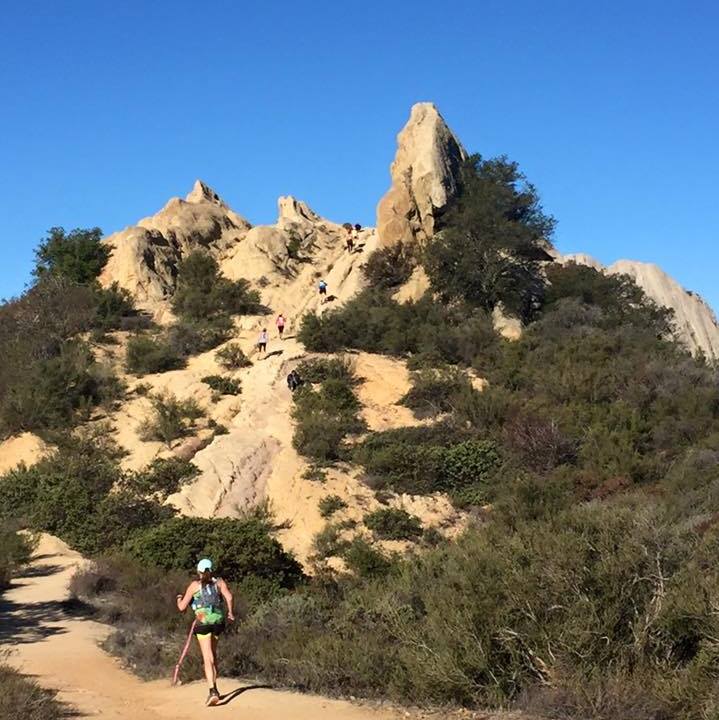
A shot of the big hump of sandstone we had to get over before the first aid station. That’s my former client Kate Panepinto powering up the trail with excellent form in the foreground. (Photo courtesy Angela Abbey)
By the top of the hill, I was thoroughly warmed up and glad I didn’t wear extra layers. I only had my gloves to take off, which I carried until I could stash them in my pack, as you can see in this pic taken by my pal Howie Stern, who was shooting on the course. (Check out Howie’s website! He has launched a business as a trail-running event photographer.)
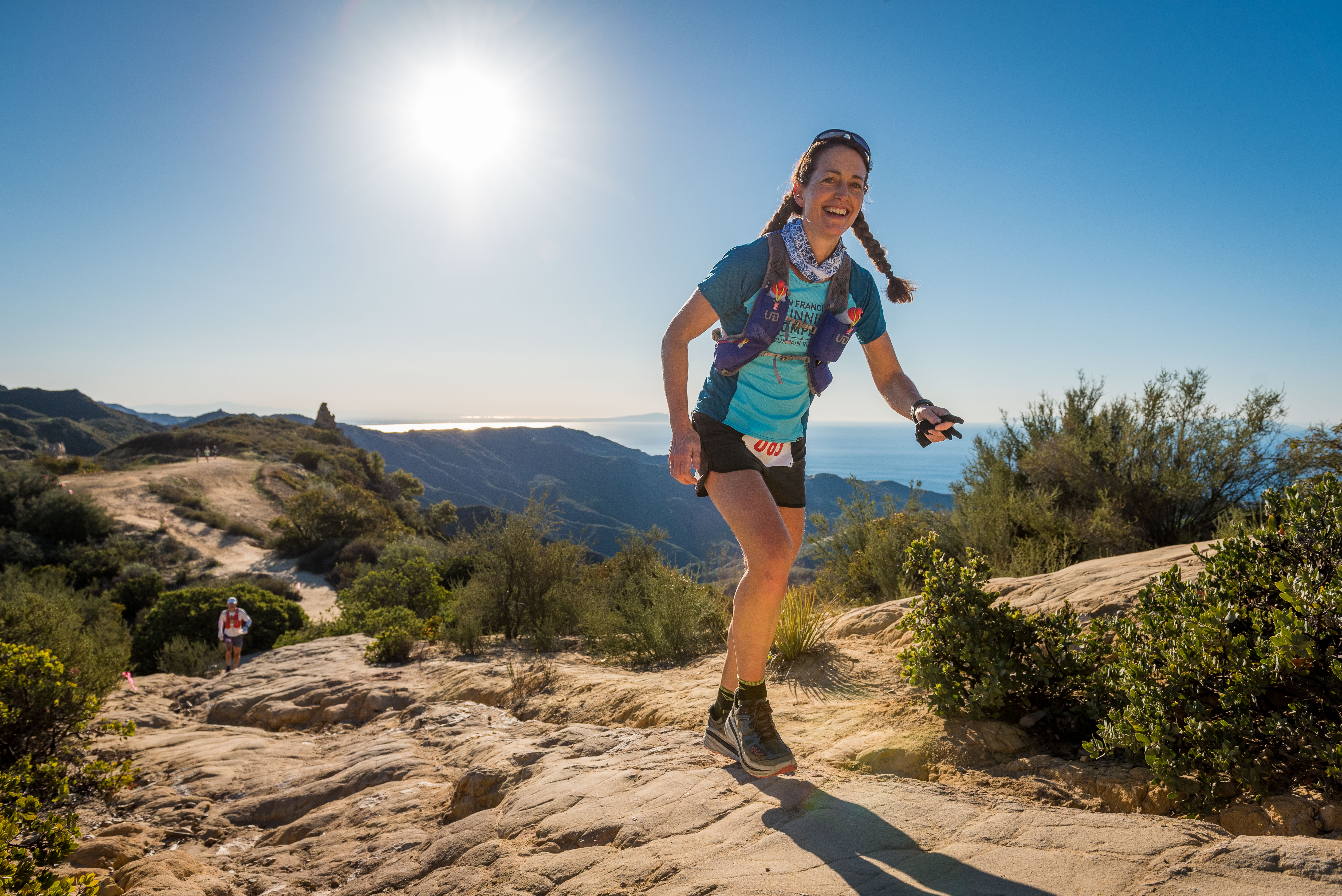
Made it! Look at that clear blue sky. This was around 8:15 a.m. A couple of hours later, when the sun was higher, the temps hit the 80s, I think. Since I’m not heat acclimated, I got hot! (Photo by Howie Stern)
From there, I concentrated on pacing as smartly as possible, following the adage “take what the trail gives you”—making the most of every stretch, adjusting pace accordingly. I also concentrated on leveraging all the sports psychology advice gleaned from Matt Fitzgerald (for details, here’s my book review, and Eric and my recent interview with him on UltraRunnerPodcast).
The trail meandered on the singletrack Back Bone Trail—occasionally popping out onto wide fire road—through a quintessential SoCal landscape of dry, scratchy sagebrush and chaparral. Shade from groves of oak and toyon provided some respite. Sometimes we faced rocky switchbacks; other times, smooth and gentle stretches where the footing felt soft and springy from the prior weekend’s El Niño rainstorm. A breeze cooled me off and made the air exceptionally clear, so that all the Channel Islands were visible off the coast.
My chief complaint concerned the hordes of mountain bikers who clogged narrow portions of trail. I’m sure they were as annoyed with us runners as we were with them; I wish the RD had put up signs at trail intersections alerting cyclists that an ultramarathon was going on so they might have chosen not to take that route. I had several close calls when we approached head on and played a game of chicken. Most cyclists were courteous and yielded, and I thanked them, but I yelled at one who made me dive into the bushes to avoid him.
I wanted to hit the Mile 13 aid station between 2:20-2:30, and I got there around 2:28, so I knew I was doing well but would have to keep pushing to make my goal of a strong sub-6-hour finish. Just get to the turnaround by 3 hours, I told myself, counting on a negative split (running the second half a little faster) since the way back features a lot more downhill than up. The only hitch was that the course was a little long. By 15.8 miles on my GPS (the expected halfway turnaround point), I still wasn’t there. It turns out the course was around 32.3 to 33 miles (depending on whose GPS you believe). I realized that if the course was around a mile extra long, then it’d take me 10 to 12 minutes longer than planned. Shoot, I better hurry! I pushed a little harder and hit the turnaround in 2:57, which provided some relief and confidence. I knew I might wilt in the heat on the way back, so I needed the cushion of those extra minutes for a 6-hour finish.
After the turnaround, I ran on the heels of the second-place woman. The first-place woman, Emily Kraus, was more than a half hour ahead of us—she was flying, in a league of her own, on the way to finishing in 5:01 and 3rd overall. (This was her first 50K—wow, keep an eye on her, she’s going to go far and fast in ultrarunning!) I started to feel competitive toward the woman in front of me, but in a positive way, insofar as I was grateful she was there to pace off of and to give me the goal of keeping her in sight. I reminded myself to run my own race and to race the clock, regardless of where I was in relation to this woman.
She got ahead of me at aid stations because I took a little extra time to drink the electrolyte mix, along with soda. I also got my buff wet and wore it around my forehead to cool off my head. I stuck to my plan of using only gels, plus one pack of Honey Stinger chews, and this seemed to work well. I wanted simple, quick-burning sugars from gels, rather than the kind of real solid food I gobble down in longer ultras, since I intended to run with a higher heart rate from pushing the pace and didn’t want digestive problems. I recently switched from Gu to VFuel and noticed that VFuel seems to work better in terms of boosting and sustaining energy, and tasting good, without upsetting my stomach. However, I was dehydrating in the second half in spite of drinking to thirst; I only peed twice during the whole race, and the second time, my urine was noticeably dark.
Still, I felt good and cruised along, trying to push the speed on nice, easy stretches, as in this photo.
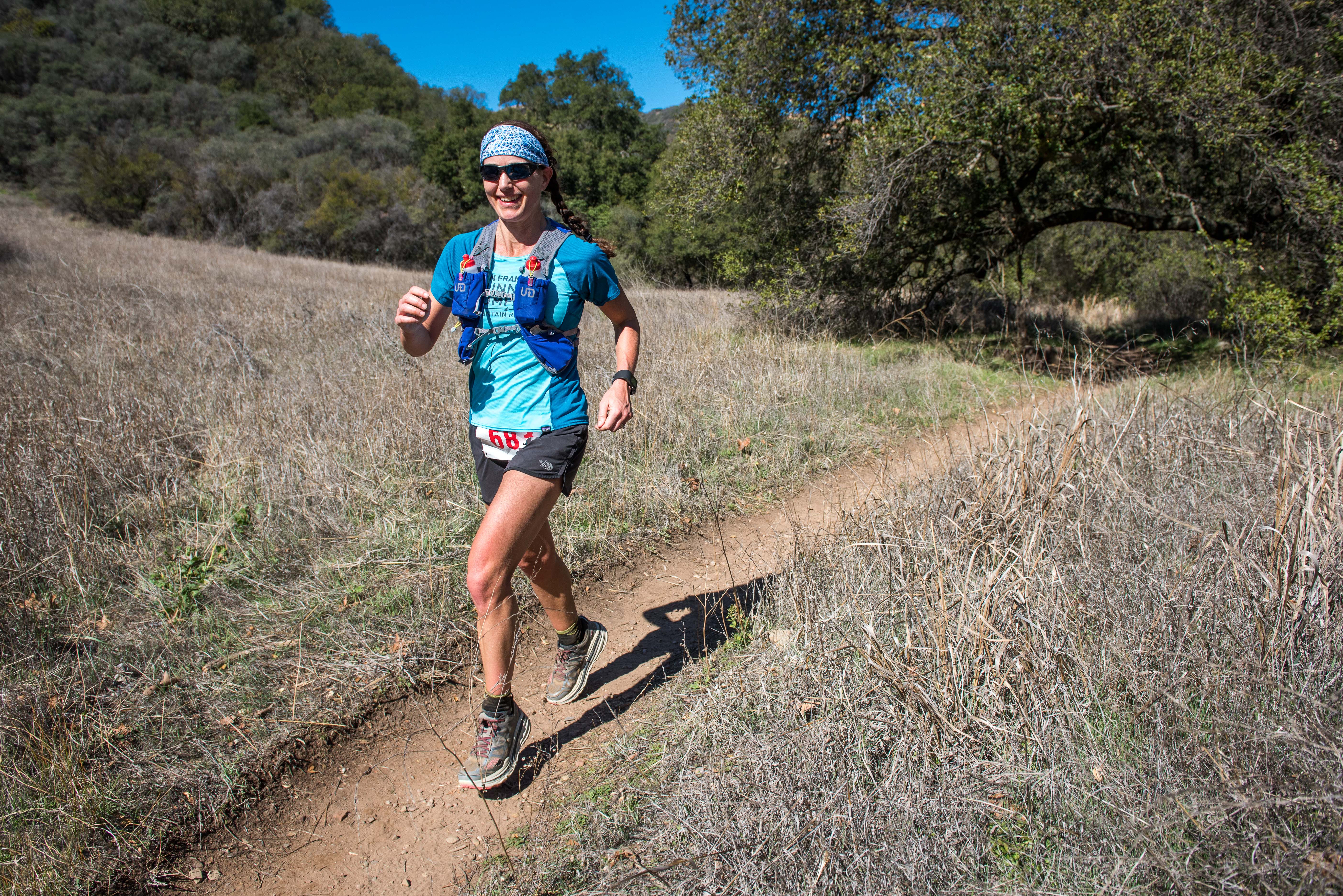
Somewhere between Miles 20 and 23. (Photo by Howie Stern)
Cramping in my foot was the only significant problem that cropped up, besides mild dehydration. Could they be related? For the first time ever, I got uncontrollable, toe-curling cramping in my left forefoot, as if I had a little charley horse at the base of my toes. It was scary insofar as it was sudden and momentarily made my foot feel useless. I ran through it and promised my feet that they would feel better at the Mile 30 creek crossing, when they would get soaking wet again.
I no longer could see the second-place woman, but rather than feel demoralized by the gap she put between us, I vowed to do the best I could on the steep downhill plunge that starts about five miles from the finish. I was able to lean forward with windmilling arms and maintain a light, quick cadence so that the downhill footstrikes felt more like smooth, symmetrical pedaling than hard hammering. Nonetheless, going down 1500 feet in a couple of miles on tired legs is bone-jarring and draining. I passed many slower runners who were finishing the marathon division, and all of them looked miserable.
The cold creek crossing at the bottom of the hill felt heavenly, and I paused to soak my puffy, dirty hands and splash water on my face. Then my watch told me it was 5:38 and to hurry and bag these final two miles. I should be able to run sub-11-minute pace to get under 6 hours, but I faced one more tough little hill.
On that hill, my heart rate spiked, so I intermittently hiked to catch my breath. Then I made up for it by running as fast as I could on the flat parts.
The result: I squeaked under 5:57 for the 3rd place female finish (1st master’s woman), about seven minutes behind the second-place woman, and 10th overall. I was so happy! Thankfully, my husband Morgan showed up at the finish to share the moment and hang out afterwards.
I highly recommend this race as a season-opener and am grateful to Keira and her crew for putting on a first-rate event. Now, two days after the race, I have only a mild case of DOMS (delayed onset muscle soreness), and I’m psyched for the months ahead.
Bonus: The Idiot’s Guide to Race Day Planning
The day before this race, I realized I had neglected to follow the advice I tell my clients about carefully studying the course and making a plan for pacing, refueling, gear, etc. I was too distracted by work, and focused on day-to-day training, to get my act together.
Recently, Ian Torrence posted a comprehensive article on iRunFar about planning your race pace. I recommend it because it’s full of good advice. But it’s also quite technical and time consuming. If you have limited time and want the quick-and-easy version, then I suggest the following method, which took me less than 30 minutes to do. I crammed and did this “homework” right before we left for the airport to fly down to Southern California. It’s not perfect, but it proved good enough!
- (Stating the obvious) Get on the website and grasp the key features of the course and the aid station locations.
- Look at past results. Search for a runner you’re familiar with, who generally finishes near you or better than you. I spotted a few. First, I noticed that last year’s female winner—who always beats me by a good 20 minutes or so—finished in 5:32. This told me right away that it’s a tough course, since I usually do 50Ks in 5 – 5:15. The runners I tend to race near finished this course in prior years around 6 hours. Ergo, I set my goal: Break 6 hours. Getting under 5:50 would be awesome.
- Look on the website for a link to past splits, and then make a goal of when to hit those points on the course. This event provided the splits of runners at Miles 13 and 18. Using the times of those runners who ran slightly sub-6, I determined a 10-minute goal range for those two points, and I zeroed in on the midpoint the range for each of those checkpoints. That way, I could push myself to hit the spot around that time, and tell myself, “If I hit 13 around 2:25 I’m doing great.” Also, since it’s an out-and-back-course, I knew I wanted to reach the turnaround under 3 hours (the halfway point of my goal finish time).
- Print out the course elevation profile. (I do this by using the “grab” tool to clip it from the screen and paste it into a blank Word doc for printing.) Then draw in where the aid stations are. Add the goal times for the splits.
- Think about the minimum amount of calories you’ll need and where you’ll want to ingest them (knowing you can get more at aid stations). This will enable you to plan how much to carry in your pockets (and whether, for longer ultras, you’ll want a drop bag anywhere for any necessities you can’t get from an aid station). It also will help you strategize about whether to skip stopping at any aid stations in the interest of saving time. For this course, since we faced a monster hill between Miles 2 – 5, I decided to take my first gel early, at Mile 2, figuring I’d need extra calories to burn on the uphill and also in case I was burning extra calories due to early-morning cold temperatures. I also decided I wanted to avoid eating before the big final downhill, as that might upset my stomach. I consequently made a plan to pack five gels and one pack of chews.
- Be willing to listen to your body and deviate from this plan during the race. Due to the day’s heat—and the fact the course was an extra mile long—I ended up needing more calories and liquid than anticipated, so I stopped to drink at the aid stations I had hoped to breeze through. I grabbed an extra gel from the last aid station and saved it to eat with only 2.5 miles to go, so I had energy for that final little hill.
Developing this plan boosted my confidence, sharpened my goal and prevented me from carrying too much stuff. Here’s how it looked; I studied this printout a few times before the start.

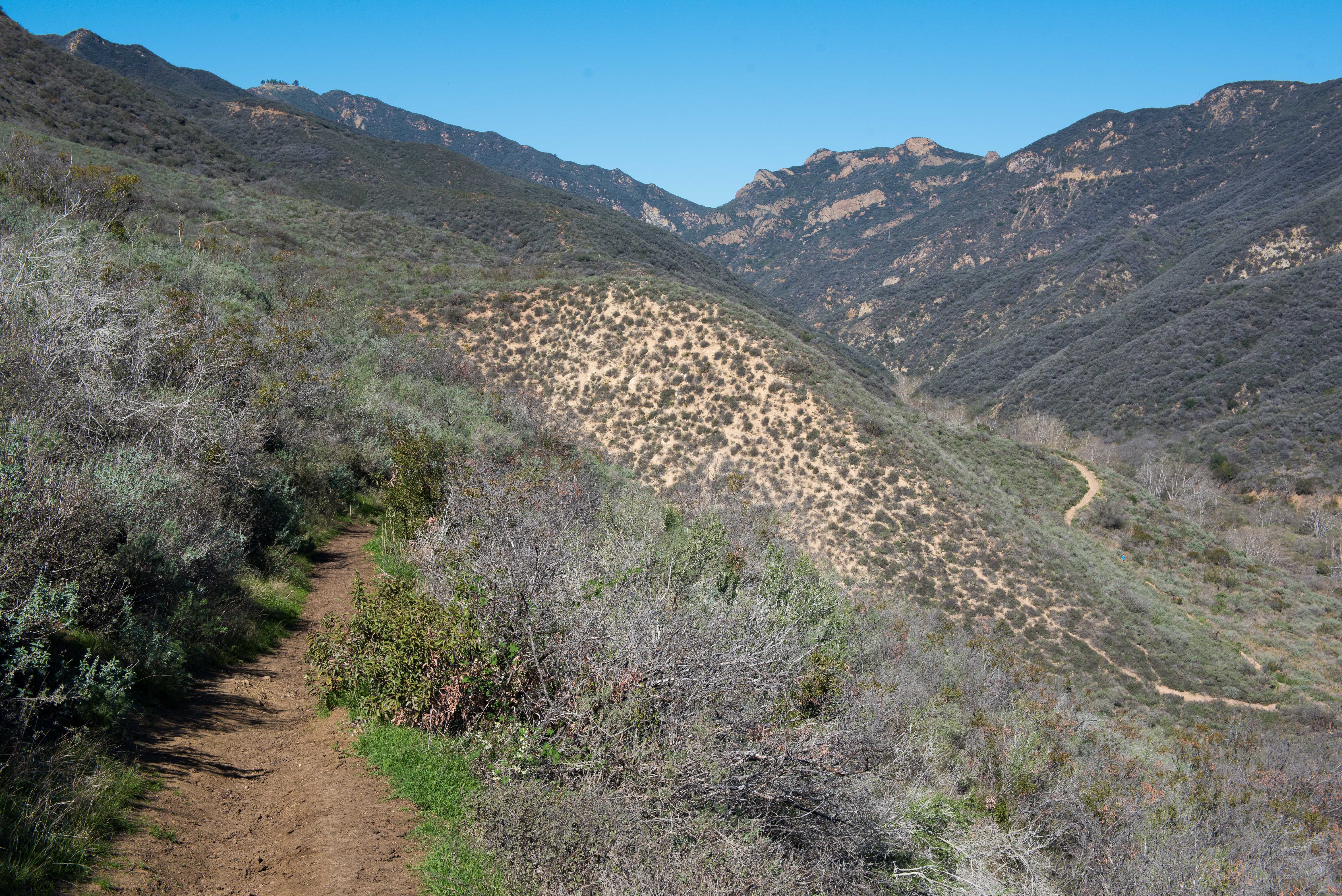
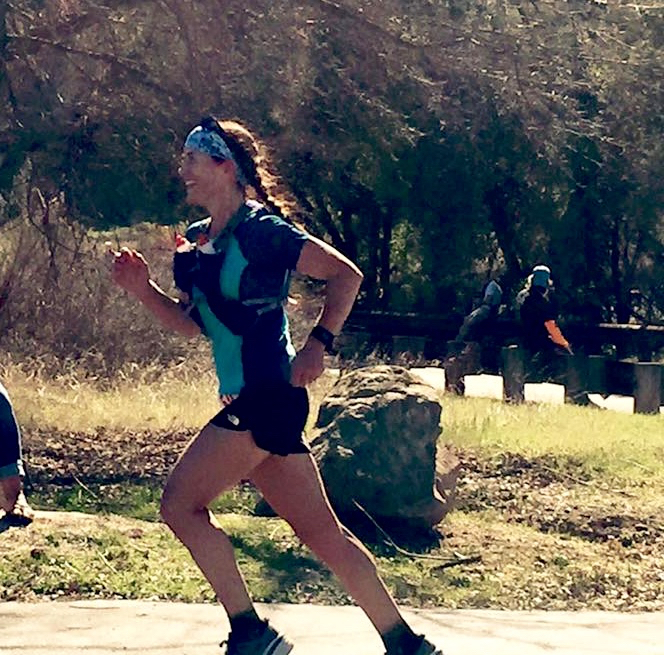
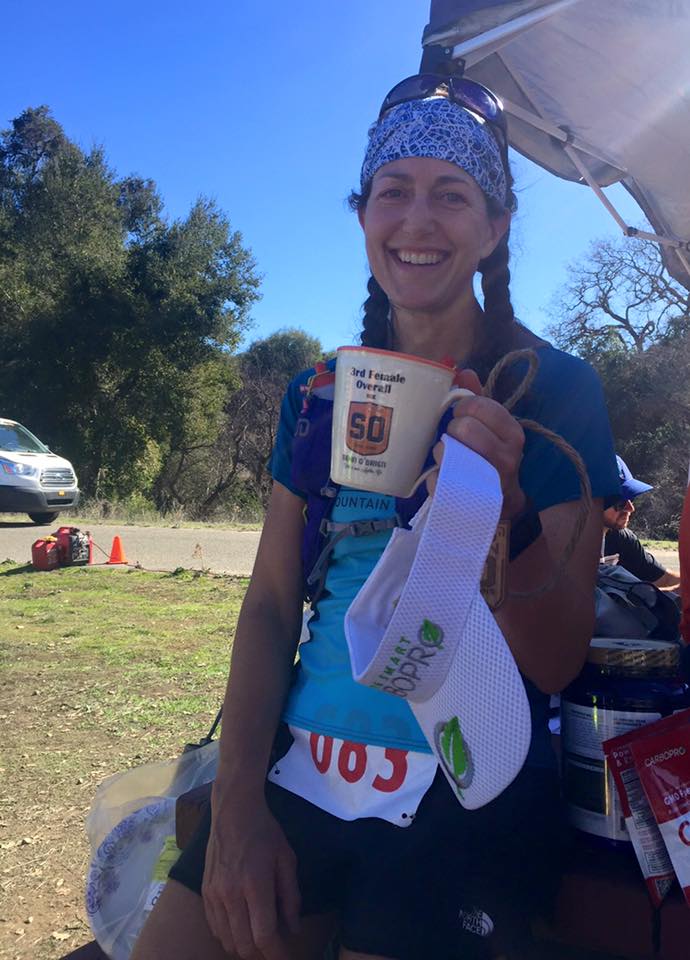
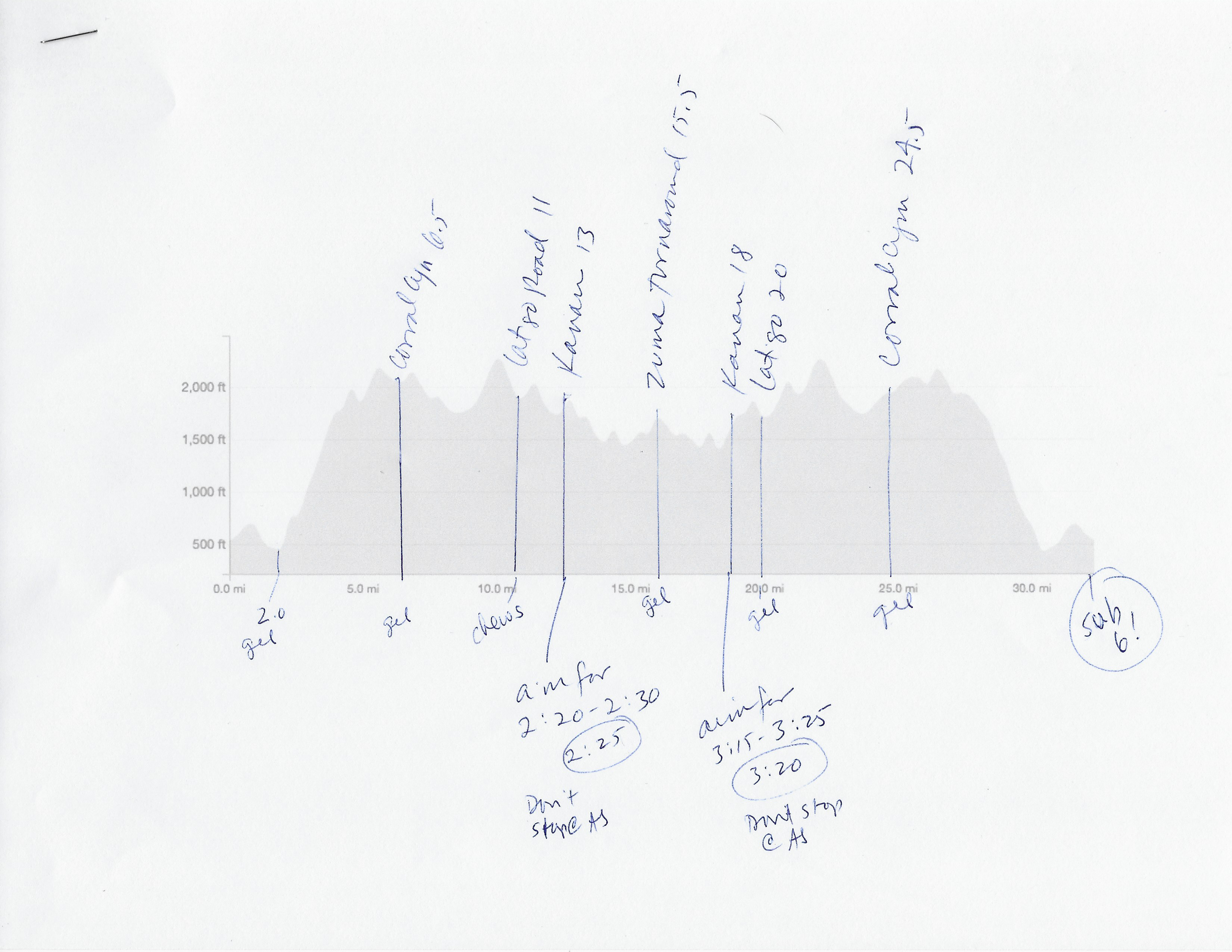
Thanks, I enjoy reading your blogs!
Congrats on such great race execution – that’s a really tough course and sub-six hours is remarkable! One thing that struck me when reading about all the prep you put into this (abbreviated as it was, it was still pretty dang thorough), I’m surprised that the length of the course didn’t somehow show up in the fact finding process. Regardless, you were so wise to stick to your distance plan and are in perfect position for the Lake Sonoma 50 – I can’t wait to see you powering through Western States!
Congratulations on your placing. It must’ve been rewarding to get a little gratification from a smart race choice and a well-executed day.
I appreciate all the detail, too. Thank you for the recap.
I enjoyed your post on how things went right! It’s really quite helpful. I am preparing for my first trail marathon, and it’s encouraging to see how you did so well–with your planning.
I noticed you have the SW trail fest on your calendar. I saw an ad for this and it looks really cool, and sort of doable even for undistinguished runners like myself. (No carrying all your food and gear like Grand-to-Grand, which is clearly out of my league.) The logistics of getting to Kanab in Oct. from the Bay Area etc are tough for me, so I probably won’t attempt it, but I hope you’ll post about it.
Thanks again for a great blog!
This was an awesome write up, thank you for sharing.
I’m embarking on my first adventure to completing a 50k, and I’ve picked the Sean O’ Brien as my first 50k.
You know that feeling you get when you’re on a fast roller coaster and it’s about to take off? That’s the feeling I have right now in Week 1 of my training!